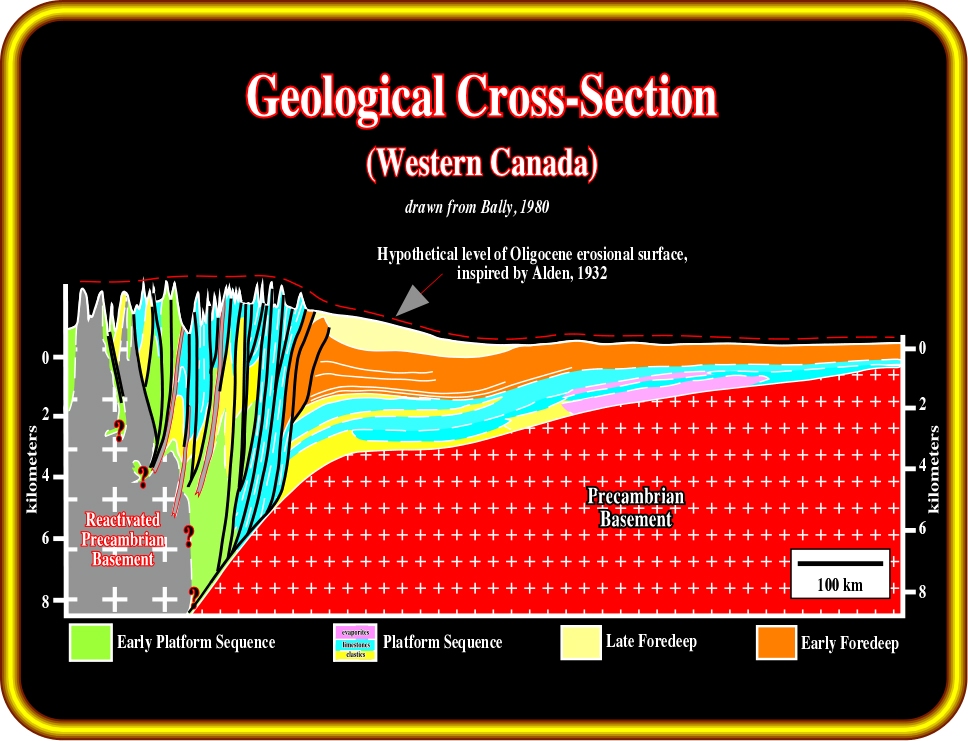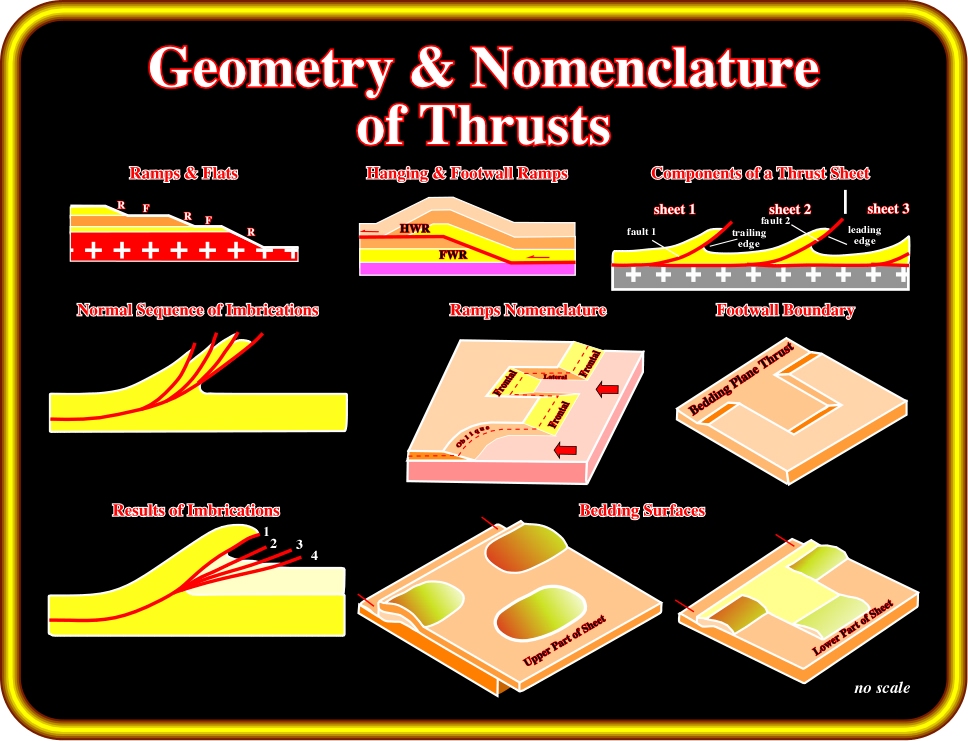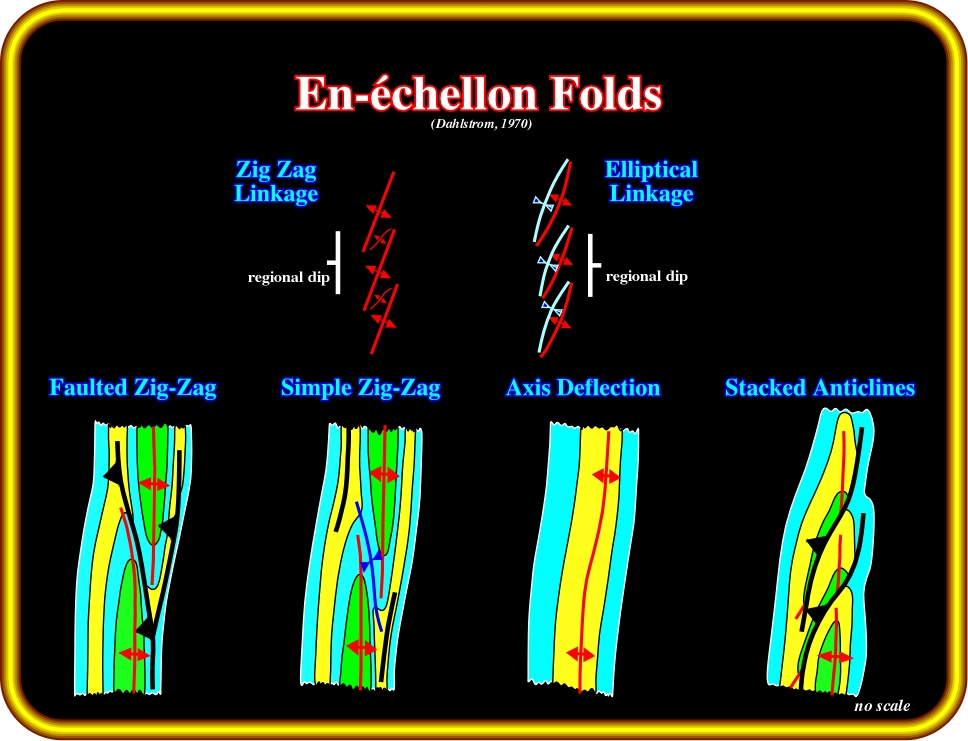
Universidade Fernando Pessoa
Porto, Portugal

Geological Setting & Seismic Interpretation

Plate 8 - This geological cross-section illustrates that the regional idea developed in the plains subsurface, where the gently west-dipping “layer cake” sequence permits calculation of “regional rate of dip can be used as the basis for extrapolation in cross-sections (Dahlstrom, 1970). This extrapolation can be carried into the structurally deformed area because much of the displacement occurs along planes parallel to bedding and does not produce duplication. The stratigraphic succession and thicknesses are unaltered, so that regional gradients are still applicable. Only at the forward edge of the thrust sheets are the beds shoved above the regional dip, but westward they return to regional. For a particular structural environment there is a characteristic structural assemblage (or family) involving a restricted number of structural forms. The Hudsonian basement is not involved in deformation. It maintains its regional dip westward, as far as the Rocky Mountain Trench. In the Foothills, the structures consist of :
(i) Low-angle thrust faults (commonly folded),
(ii) Tear faults,
(iii) Concentric folds, and their attendant detachment and
(iv) Late normal faults (commonly low-angle).

Plate 9 - In the southern Rocky Mountains, there are three main detachment styles:
1) Concentric Fault Detachment
A detachment above and below a concentric folded section is a geometric necessity. The upper detachment is not normally recognized. It is either hidden below a panel of simple dips or removed by erosion. The lower detachment does exist, where the folds end concentrically against a detachment which is also a major thrust fault. This geometry could represent concentric folding above a detachment that was already a thrust or above a detachment that subsequently become a thrust. The outer edge of the disturbed belt marks the boundary between the shortened and structurally thickened section of the Foothills and the normal stratigraphy of the Plains.
2) Front Fold Detachment
The regional dip of the Plains is westward, and the general dip in the Foothills is westward. These two areas are generally connected by a short panel of east dips producing a synclinorium-anticlinorium fair commonly called Front Fold, and the Alberta Syncline. The west flank of the Alberta syncline has an unbroken east dip, which implies a discontinuity with underlying folded and faulted Mesozoic.
3) Sole Fault Detachment
The lesser thrusts join a sole fault. The distinction between these faults depends on whether the movement plane is parallel to bedding (a detachment) or transgresses bedding (a thrust).
B) Geometry & Nomenclature of Thrusts

Plate 10 - The main geometries and nomenclature for the thrust faults proposed by Butler, 1982 and Dahlstrom, 1970.

Plate 11 - Tear faults within a sheet or packet of sheets do exist in the Canadian Rocky Mountains, but they are relatively rare. Most are primary transverse tears, and very few secondary oblique tears have been recognized. This scarcity of oblique tears could be because there is little of the arcuation of the regional trend into pronounced salient and re-entrants that, in other orogens, causes longitudinal extension of fold axes and thrust sheets. As geologists mapping Foothills terrain are accustomed to looking for thrust faults, the basic criterion for recognizing faulting has become repetition of section. There is, of course, no repetition on strike-slip segment of the tear faults which makes them very hard to recognize in low-dip terrain.

Plate 12 - Main kinds of en échelon folds found in the Canadian Rocky Mountains and the Foothills.